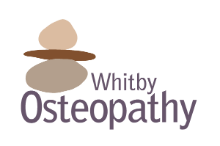Frequently Asked Questions
What is Osteopathy?
Osteopathy is a profession that makes extensive use of manual diagnosis and treatment guided by the principles set forth by its founder, Dr. Andrew Taylor Still. Osteopathy emphasizes the interrelationship between the structure and function of the body. Osteopaths are functional anatomists who use manual therapy. They find health, rather than focus on disease. Osteopathic treatment works to restore proper body mechanics, nerve impulses and the circulation of body fluids.
What is a Classical Osteopath?
Osteopathy is a drugless form of manual medicine that approaches treatment through a system of principles based on an in-depth knowledge of Anatomy, Physiology and Biomechanics as outlined by its founder, Dr. A. T. Still in 1874. Osteopathy is a complete system of healing that is adjustive in application and vitalistic in nature since it is applied to bring balance to the entire body so that our self-healing and self-regulating abilities can be restored and health can flourish where disease and dysfunction are present. Practitioners of Osteopathy strive to have a strong effect on the anatomical structures of the body so that the physiology of the body can operate without obstruction. The results of proper Osteopathic treatment can be curative, preventative, and/or palliative. It is important to note that Osteopathy is not a modality that is applied as an adjunct to other therapeutics or something that can be described as a series of techniques.
Osteopathic Training in Ontario
An Osteopathic Manual practitioner who is skilled in its classical essence will have received extensive training in the art and science of Osteopathy. The Canadian Academy of Osteopathy has been proven to provide unparalleled excellence in Osteopathic education as it offers a 4 year, 4400-hour program that encompasses all elements required to produce the very best Osteopathic Manual Therapists in Canada today. Upon completion of this program, the graduate will receive a Master’s Diploma in Osteopathic Manual Sciences (MOMSc). Once this is completed he or she is eligible to apply for membership with the Ontario Osteopathic Association. In order to become a member of the Registry with the Ontario Osteopathic Association, an applicant must successfully pass a national-level examination that will test all areas of education so that the public can be assured that the practitioner has been trained adequately.
Is Osteopathy regulated in Ontario?
At this point, the profession of Osteopathic Manual Therapy is not regulated in Canada. However, the Ontario Osteopathic Association is a self-regulatory body that recognizes its members have completed the proper level of education through proof of graduation from a college that is at least 4 years in duration (4400 hours) and have also passed a national level examination through a recognized association. The public is advised to ensure that the therapist you choose has been adequately trained in the art and science of Osteopathy by qualified instructors at a reputable college and is a member in good standing with an appropriate registry that has recognized his or her educational achievements such as the OOA.
What can I expect during my first visit?
During your first visit, you will be required to fill out a health history form that must be kept up to date and revised on a yearly basis. If you find that there are any changes to your health, please advise the practitioner so that he or she can make necessary changes. There is no need to disrobe, however it is beneficial to the patient and the practitioner if one is to wear loose fitting clothes so that the assessment and treatment process is not limited by restrictive clothing. Any information gained through the interview process and during treatment application is strictly confidential and cannot be release to anyone without your written consent
How is Osteopathy different from Chiropractic?
Osteopaths trained in Canada do not use HVLA or thrust type adjustments. Although Osteopathy is adjustive in nature; an Osteopathic Manual Practitioner who is trained in a classical sense does not focus their attention on subluxations like most Chiropractors, but rather treats the whole body in an integrative fashion. Osteopathic manual therapy brings balance to the body through a gentle approach which addresses the pelvis, spine, cranium, ribs and extremities as well as the soft tissues in the body such as muscles, ligaments and visceral organs. They focus their attention to the fine details that support health and well being by relieving pressures and obstructions that restrict the natural flow of nerves, arteries, veins, lymphatics, and cerebrospinous fluid so that the person receiving treatment can heal through the inherent forces that are naturally driven.
Who can benefit from Osteopathic Manual Therapy?
Anyone at any age can benefit from Osteopathic Manual Therapy by a qualified practitioner. An Osteopath does not simply treat symptoms but rather he or she works to address the root cause of someone’s chief complaint by addressing the whole body as a complete unit of function, where we understand that a balanced anatomical structure will allow for a proper physiological expression and thus promoting health and well-being on all levels. A variety of musculoskeletal dysfunctions such as muscle, back and neck pain, sprains, strains, sports-related injuries, work-related repetitive strain injuries, Disc herniations and bulges, Nerve impingements, Sciatica, Tendonitis, Bursitis, adhesive capsulitis (frozen shoulder), medial epicondylitis (golfers elbow), Lateral tendonitis (tennis elbow) and stress-related tension headaches are commonly addressed.
Through Osteopathic Manual Therapy, people have gained relief from severe and debilitating conditions such as migraines, insomnia, dysmenorrhea, pelvic pain syndrome, chronic fatigue syndromes, vertigo, nausea, constipation, IBS, reduced lung capacity, poor circulation, edema, and so on. Women who experience pain during pregnancy have experienced great relief while receiving OMT. Through proper treatment, many women have experienced less back pain, reduced or eliminated pelvic pain, increased circulation, decreased edema in the extremities, better sleeping patterns, fewer headaches an easier birthing process and a faster recovery following the birth.
Babies are commonly treated for the traumas that occur during the birthing process, as well as for certain conditions that become problematic during the months following birth such as colic, digestive problems, irritability and restlessness.
Concerning treatment of the elderly, the approach centers on balancing the body in order to help relieve the discomforts of arthritis, increase motion in restrictive joints, decrease stress, facilitate better circulation throughout the body, enhance digestion and increase vitality.
Athletes are commonly treated with OMT to resolve previous injuries that limit performance. When the body is properly aligned and the forces are distributed properly, there is less chance of the athlete becoming injured during training or the event that he or she participates in.
Our Clinics
Whitby On
Address
1121 Dundas St E, Unit 4
Whitby, ON,
L1N 2K4

